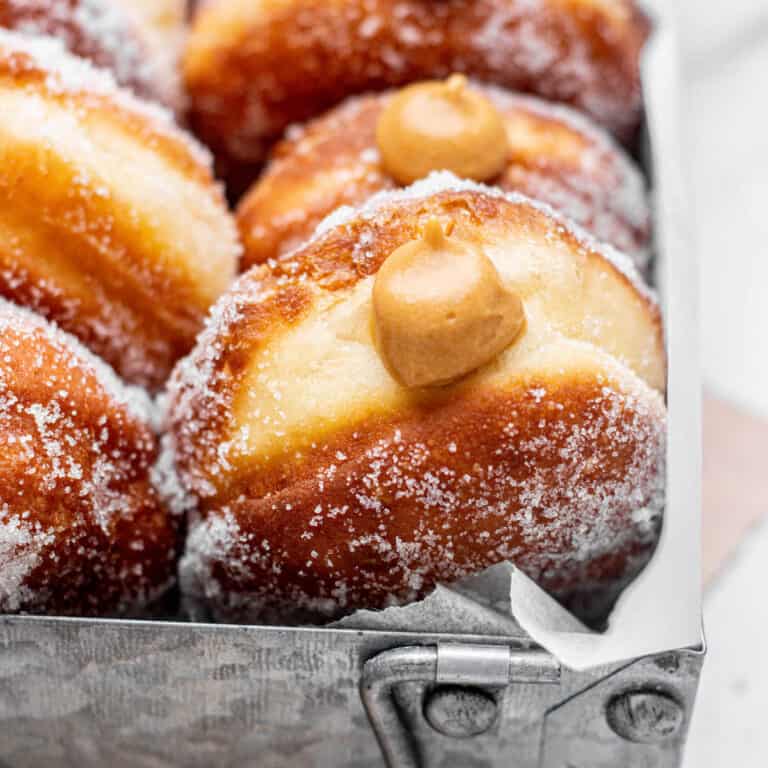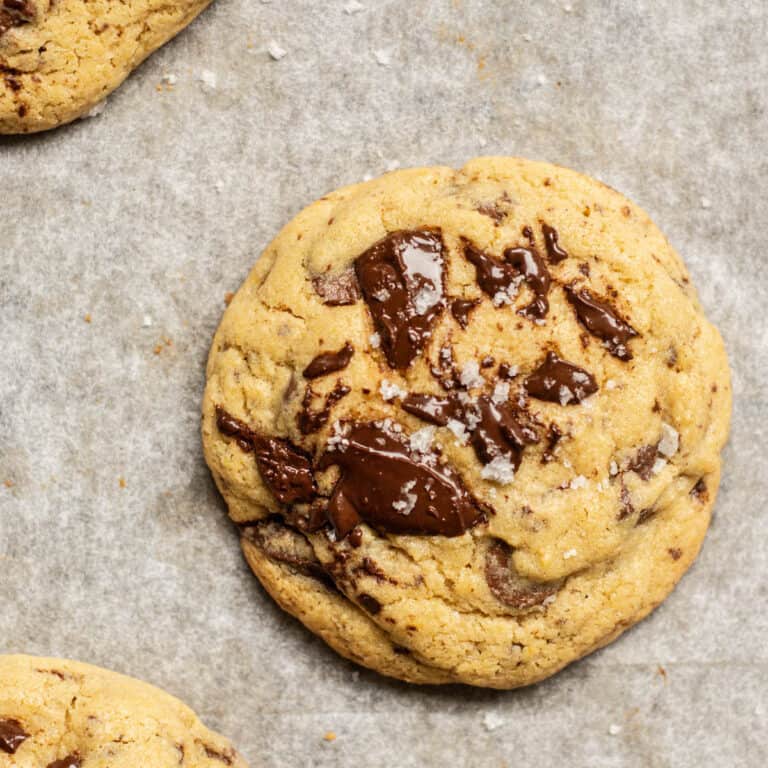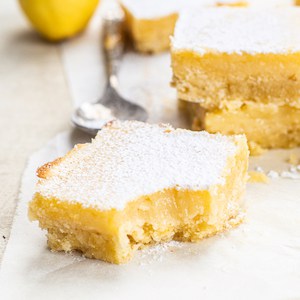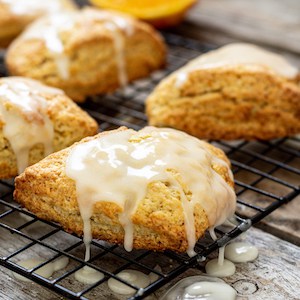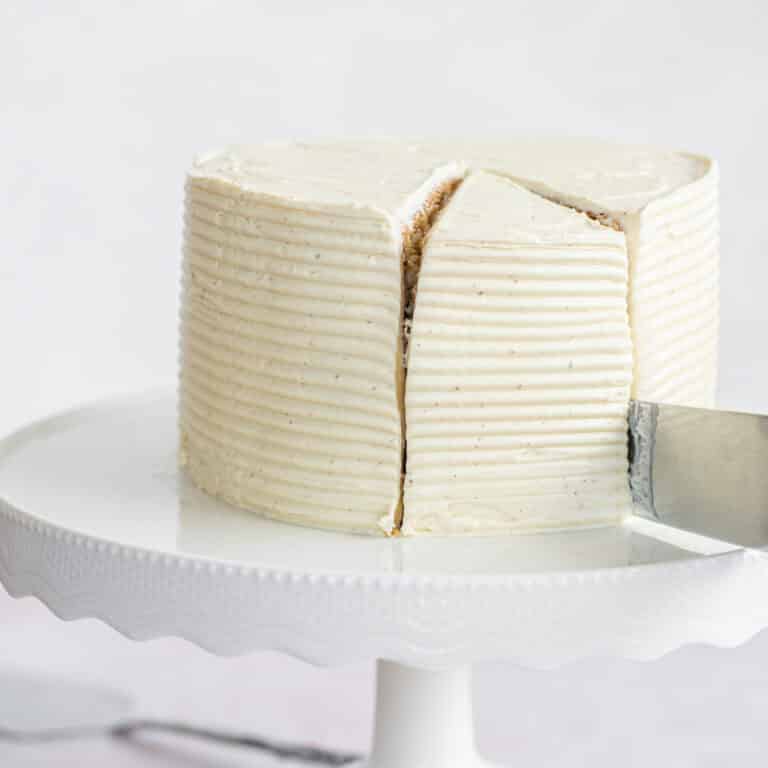Lemon Swiss Roll
If you’re looking for a lemon dessert that is both beautiful and delicious, a lemon Swiss roll is a perfect choice.
This classic dessert consists of a light and fluffy sponge cake that is filled with a creamy, tangy lemon filling, and then rolled into a beautiful swirl.
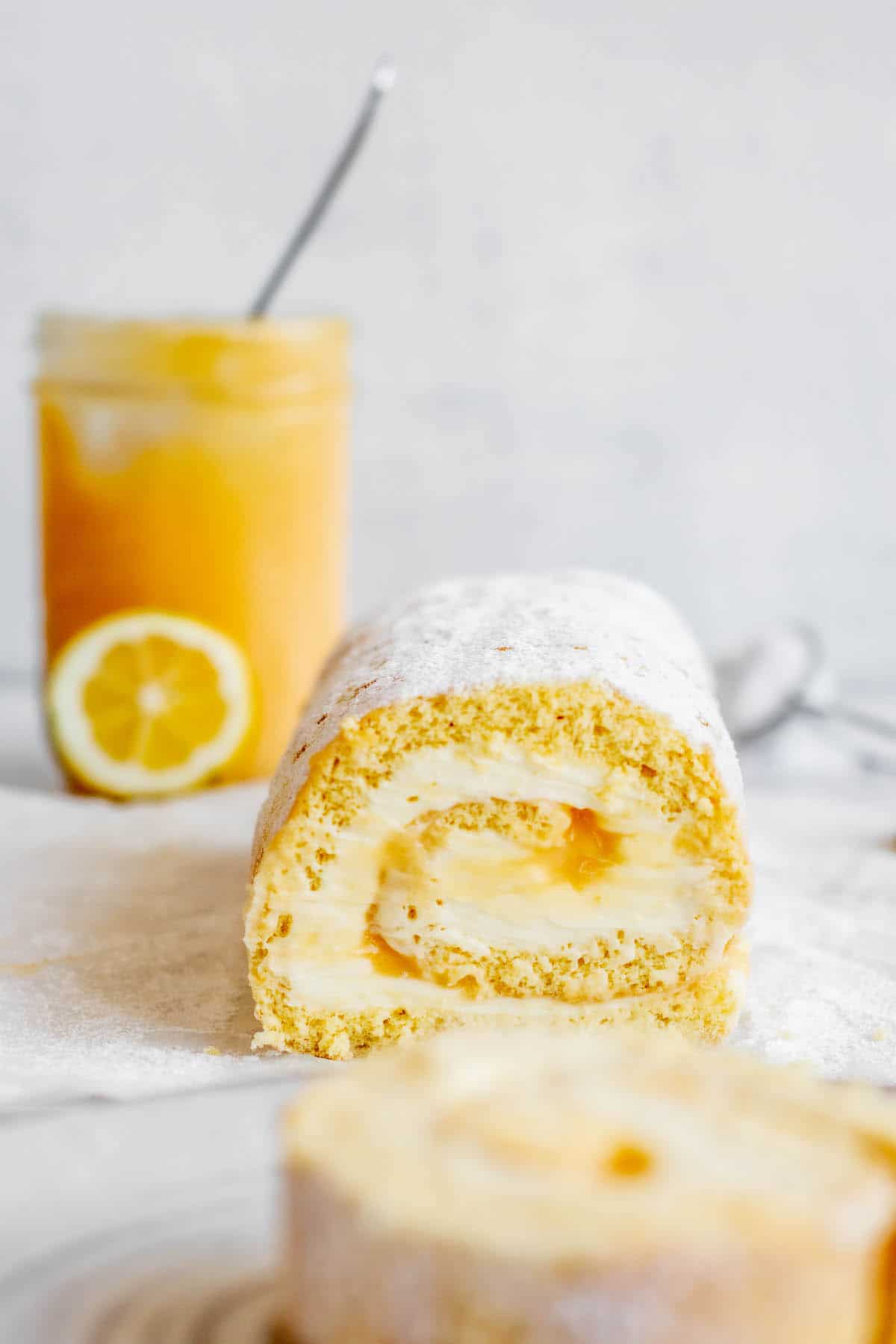
This lemon roll cake is a light sponge cake that has been spread with a filling and rolled up into a log.
The lemon cake roll slices beautifully and reveals a pretty spiral filling. The cake is usually a genoise sponge baked in a thin layer in a jelly roll pan. It’s an airy cake that’s light and pliable. I use this cake base in this strawberry Swiss roll and blueberry Swiss roll too.
This means it’s flexible to roll up and holds its shape well. It’s quite a plain sponge on its own and can be a bit dry so it pairs really well with a lemon curd filling. For another delicious lemon dessert, try these lemon curd donuts!
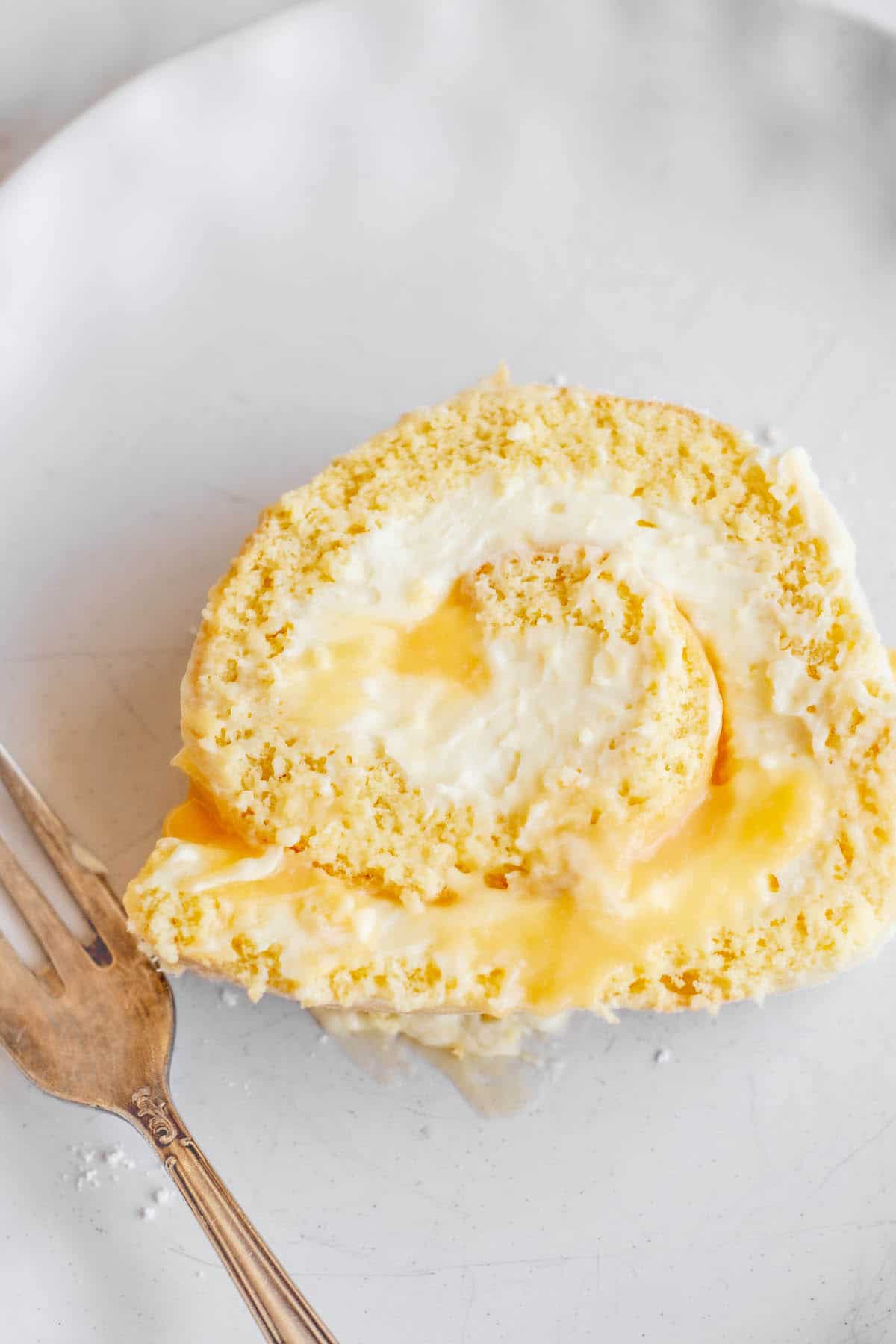
What is a genoise sponge?
The genoise sponge boasts a feather-light texture with a delicate chew. Its unique qualities make it the perfect sponge for rolling.
This sponge cake doesn’t require any baking powder for leavening, as all the rise comes from eggs. Whipping the eggs enough is crucial to the success of the recipe. Traditionally, the batter is made by whipping whole eggs with sugar until they triple in volume. Sometimes, a little heat is applied to thicken the eggs.
In this recipe, I prefer to separate the eggs and whip the yolks and whites separately with a little sugar. This method can produce an even lighter batter, as the egg yolks are whipped separately before being combined with whipped egg whites.
The flour used in the batter should be low in protein, such as cake flour. If cake flour isn’t readily available, you can create your own by combining all-purpose flour with cornstarch to soften it.
Ingredients
Find the ingredient amounts listed in the printable recipe card at the bottom of this post. Here is a rundown of what you will need.
Sponge
- Large eggs
- Granulated sugar
- Vanilla extract or paste
- Vegetable oil
- Salt
- Cake flour (or all-purpose flour and a little cornstarch)
The cream filling
- Mascarpone cheese
- Powdered sugar
- Heavy cream
- Lemon curd (you can make your own or use store-bought. My recipe for lemon curd uses fresh lemon juice and lemon zest for a zingy bright flavor.)
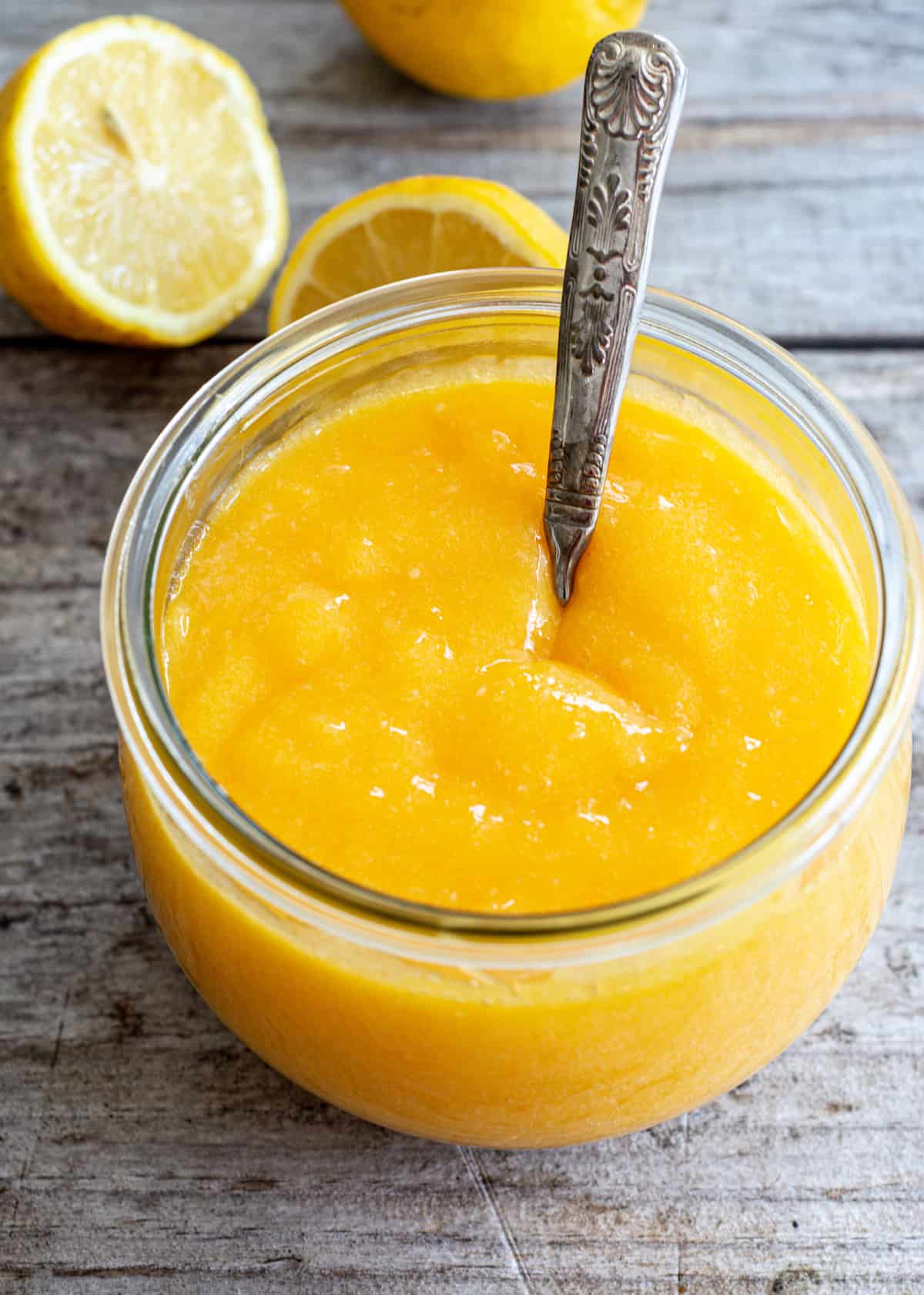
Equipment
For the sponge, you will ideally use a stand mixer with a whisk attachment. Alternatively, you can use a handheld electric mixer but be prepared to whisk for a really long time. This recipe is not suitable to make by hand.
You’ll also need a clean kitchen towel to roll the sponge in and a 15x10x1 inch Swiss roll tin / jelly roll pan.
Method
Grease a jelly roll pan with oil or cooking spray and line it with a sheet of parchment paper. Greasing the tray first helps the parchment stick and keeps the bottom surface flat
Separate 4 large eggs. Place the egg yolks in a small bowl and set them aside. Add the egg whites to the large bowl of a stand mixer and turn it on, whisking at high speed until the mixture becomes foamy.

Gradually add in half of the sugar while continuing to whisk until the egg whites form medium-stiff peaks.
The peaks should hold their shape well, but if you lift the beater from the mixture, they will flop to the side.
Transfer the whipped egg whites to a clean mixing bowl and set them aside.
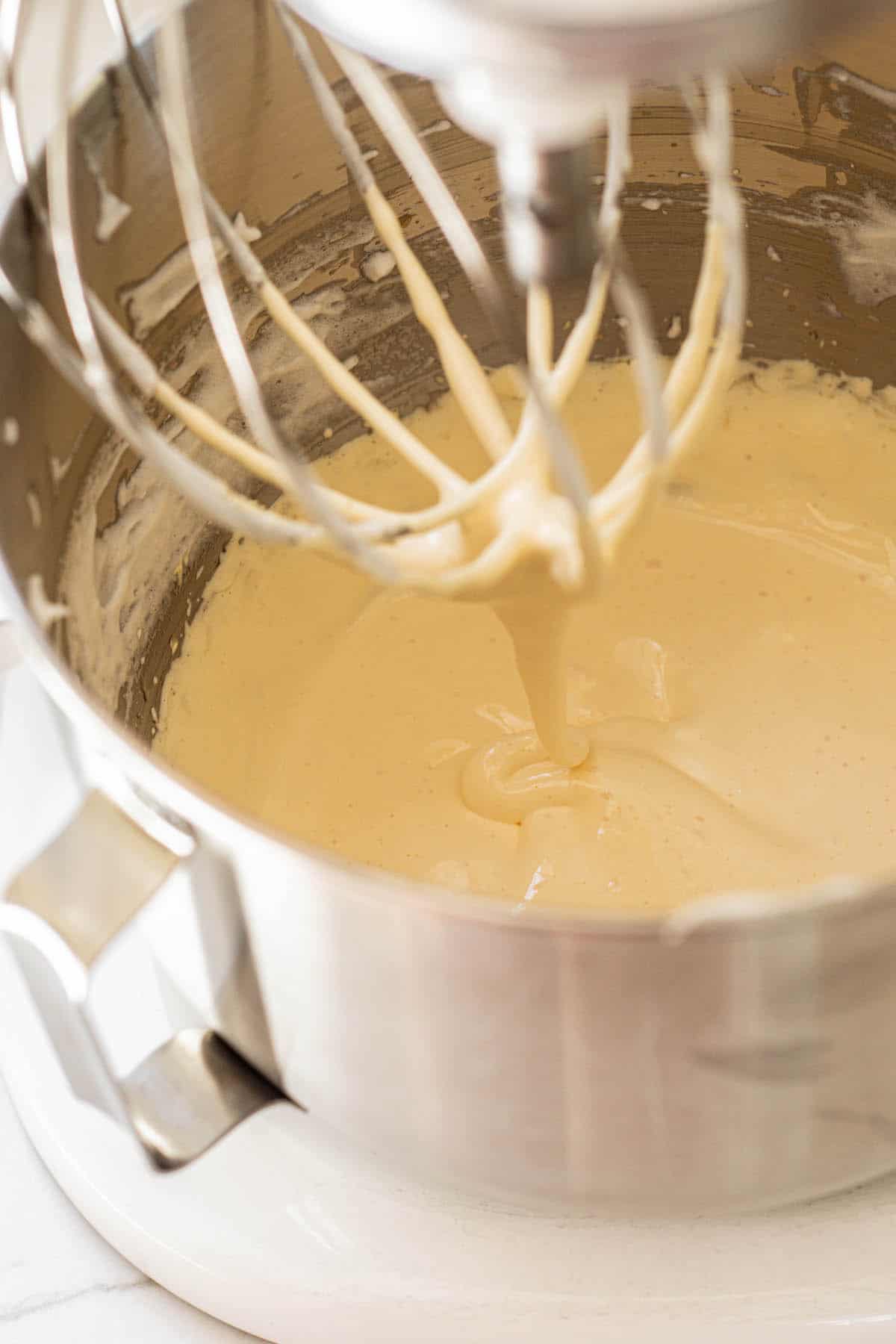
Using the same stand mixer bowl, add the egg yolks, remaining sugar, oil, vanilla, and salt without cleaning it first.
Whisk the egg yolks on high speed for approximately 4 minutes until they triple in volume and become thick and pale.
When lifting the beater out of the mixture, the light yellow egg mixture should drop thick, flowing ribbons back into the bowl.
Incorporating the eggs
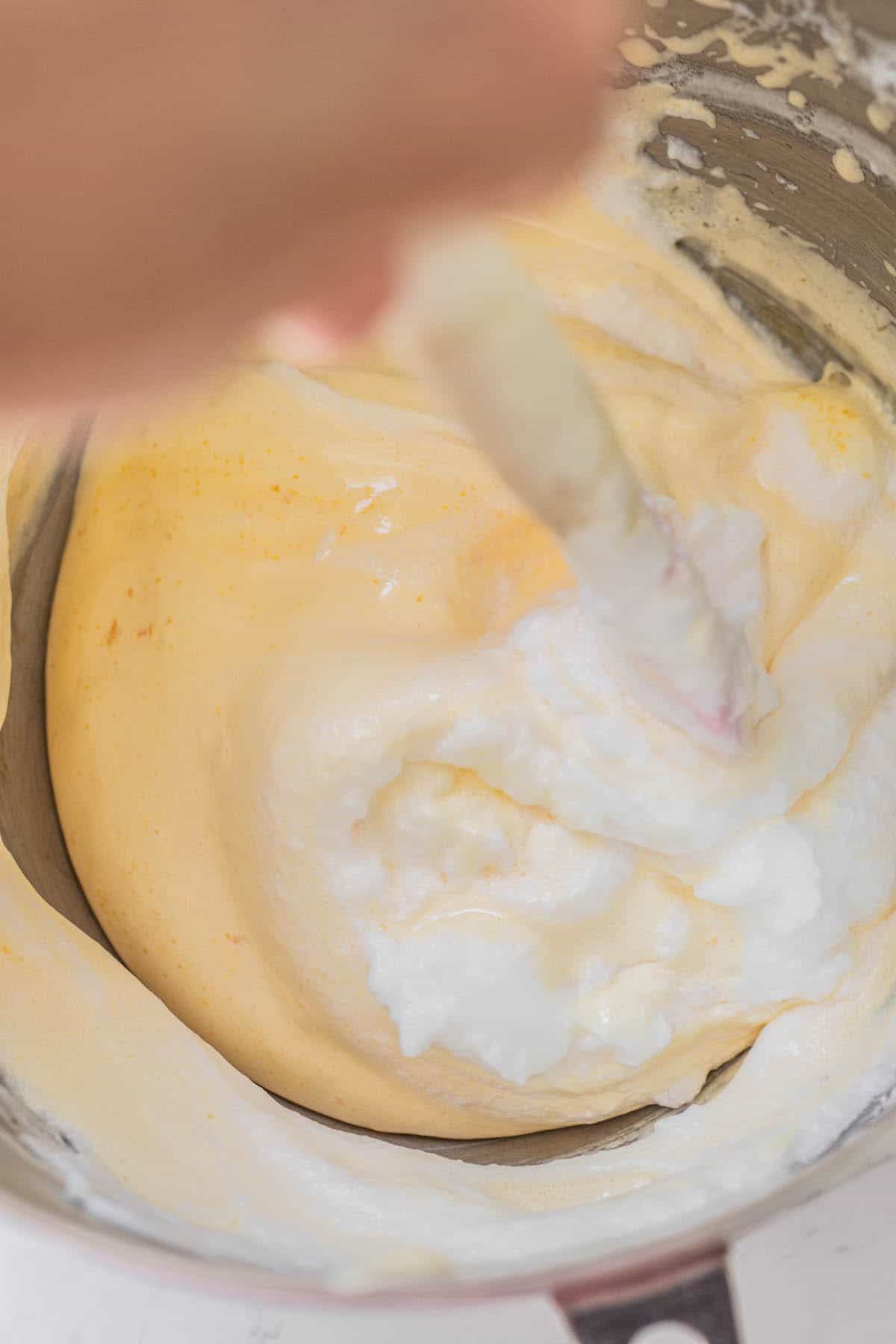
Using a rubber spatula, fold a third of the egg whites into the beaten yolk mixture, taking care not to deflate the air bubbles in the egg whites.
Gently bring the spatula through the middle of the mixture, up the side, and fold it over the top. You can rotate the bowl as you do this.
Repeat this process two more times with the remaining egg whites.
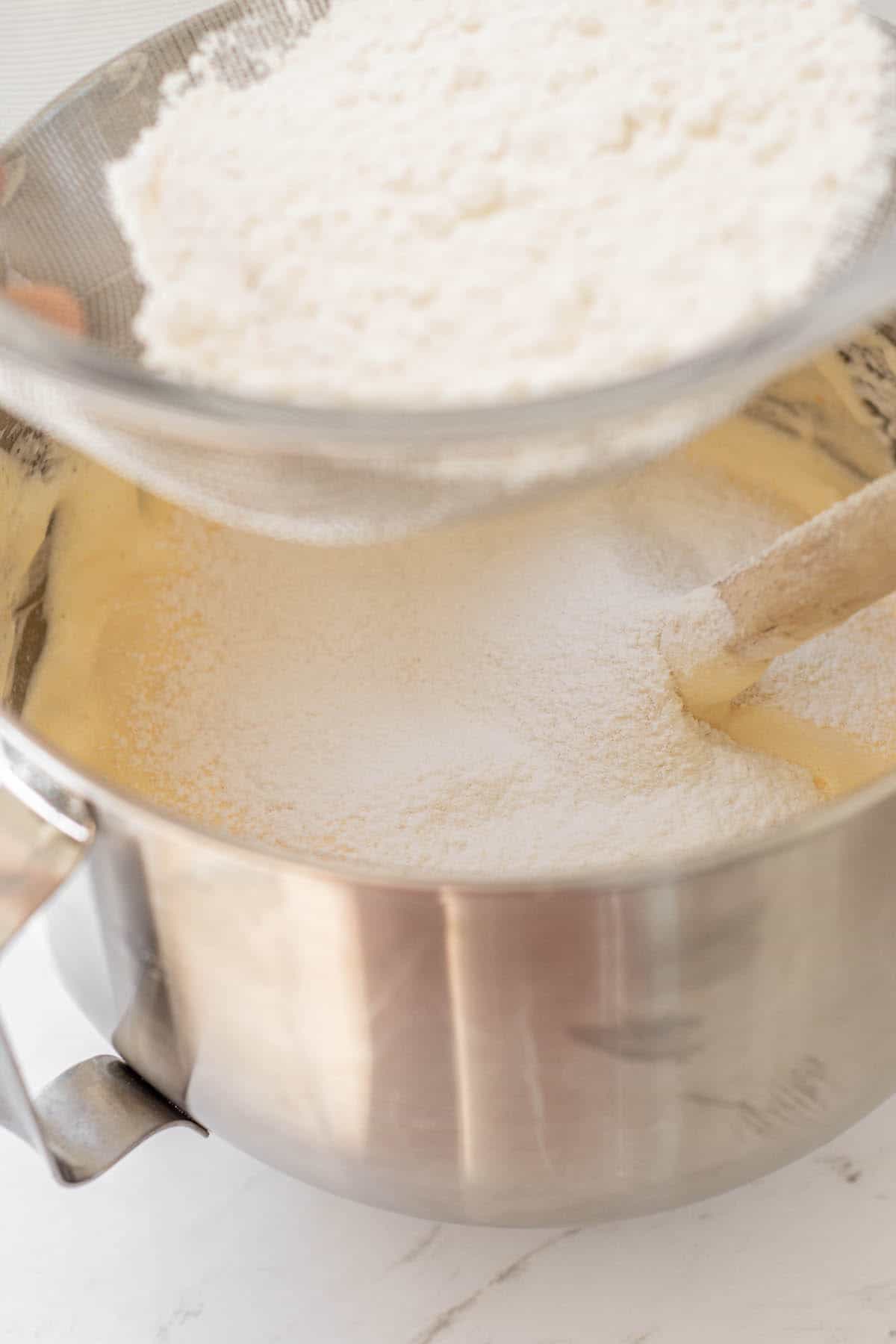
Balance a sieve over the bowl of eggs and sieve in roughly half of the flour.
Using a gentle folding motion, carefully incorporate the flour into the egg mixture, being cautious not to deflate it too much.
Repeat this process once more with the remaining flour. The final batter should have a light and airy texture while also being thick.
Baking
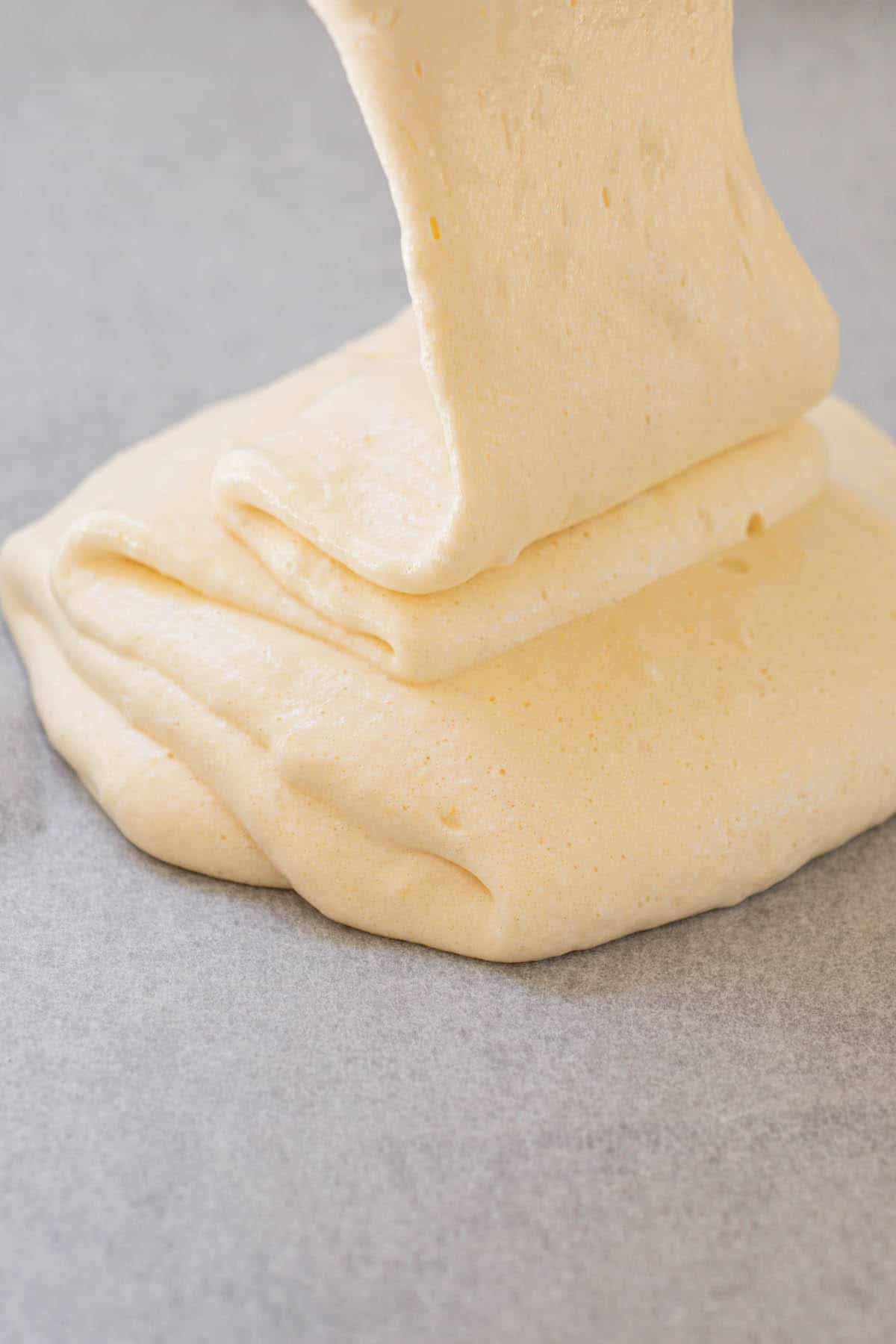
Pour the cake batter into a prepared pan and use an offset spatula or dough scraper to carefully spread the batter out into an even layer on the tray.
It’s a very thick and light batter so it won’t fill out by itself the way that wet cake batters do.

Spread it out to reach the sides of the pan.
Bake the sponge for around 10-12 minutes until lightly golden brown on the top and the tip of the cake springs back when gently pressed.
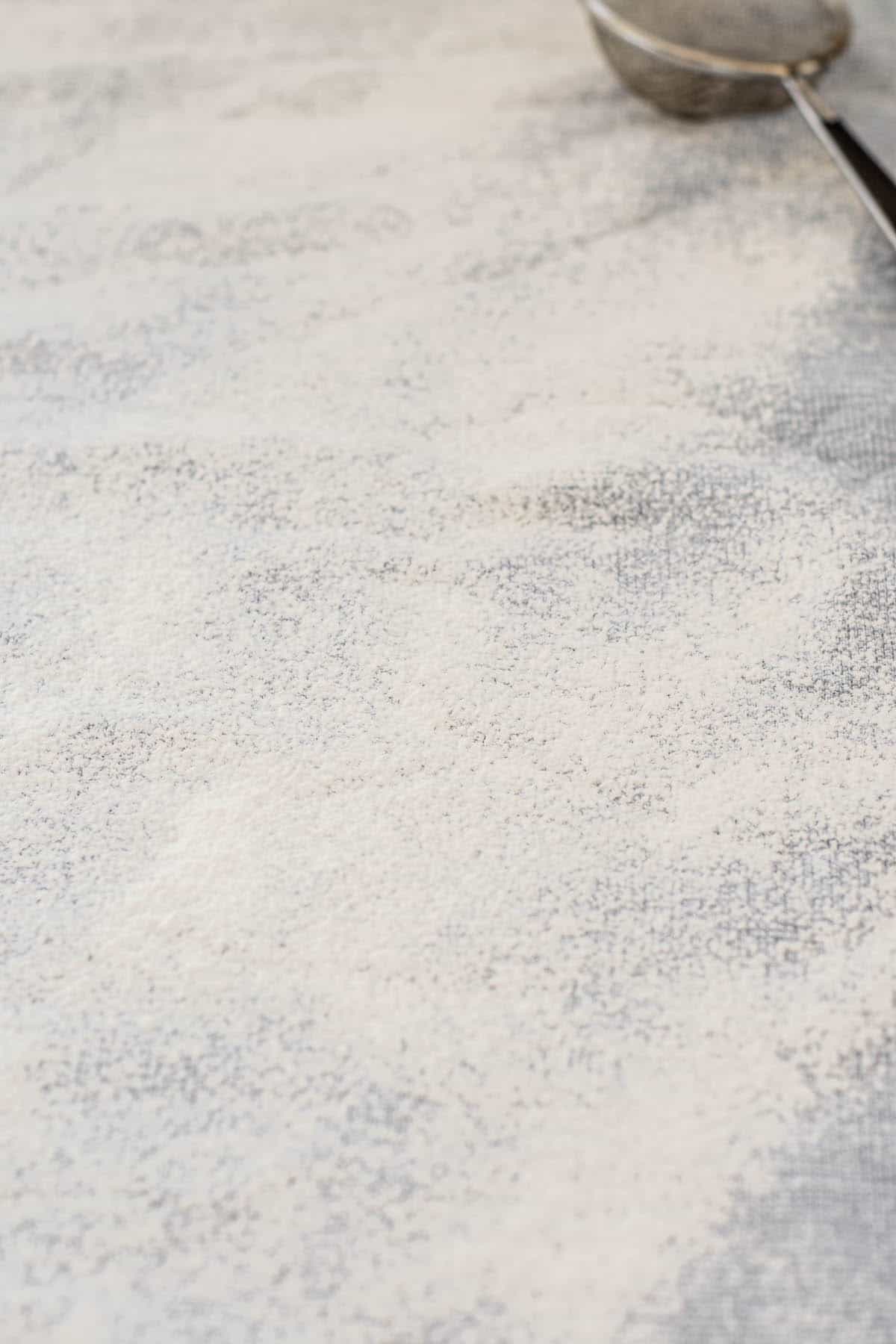
While the cake is baking, lay a clean kitchen towel on a workbench, horizontally so the long edge is closest to you.
Generously dust it with powdered sugar.

Once the sponge has finished baking, carefully tip it upside down with the long edge closest to you, onto the towel.
Carefully peel off the parchment paper.

Dust the cake with more powdered sugar, then starting from the short side, roll the cake and the towel up together into a spiral.
Leave it to cool on a wire rack until it’s at room temperature.
The cream
As the cake cools, prepare the whipped mascarpone cream. In a medium bowl, combine the mascarpone, powdered sugar, and vanilla extract. Use a hand mixer or stand mixer with a paddle attachment, starting on low speed, to mix until everything is combined.
Slowly increase the speed to medium and gradually pour in the heavy cream while continuing to whisk until the mixture becomes thick and holds stiff peaks. Take care not to overbeat it, as it can curdle and separate.

Assembling
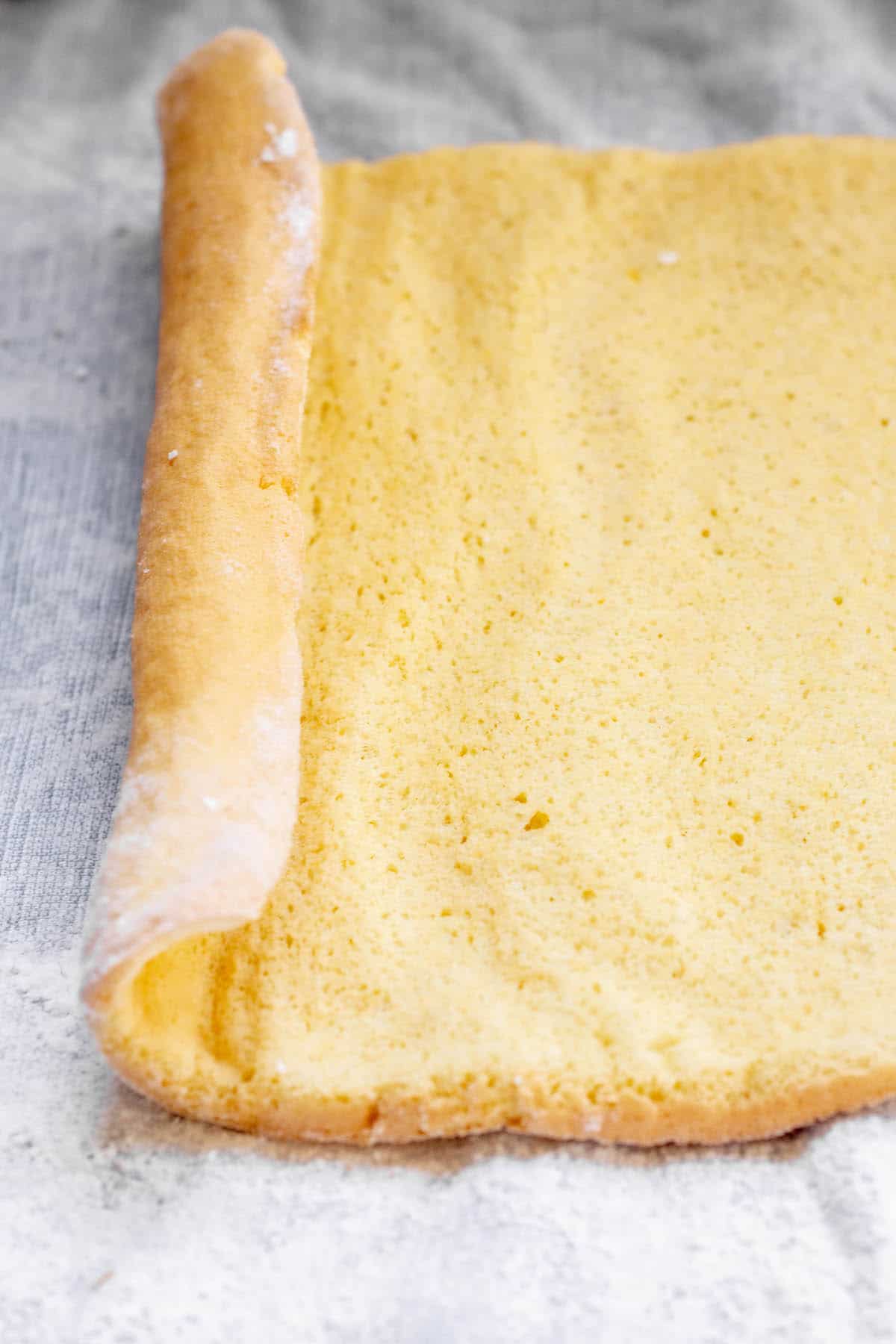
On a clean work surface, carefully unroll the cooled cake.
Spread over the whipped cream mixture and use an offset spatula to spread it out, leaving a ½ inch border on all sides.

Dollop over the lemon curd, then use an offset spatula to spread it over the cream.
Carefully re-roll the lemon roll, without the kitchen towel, back into a spiral.
Some of the thin crust of the outside of the cake may stick to the towel as you roll but this can be covered with powdered sugar. Wrap the kitchen towel around the rolled cake and let the cake chill in the refrigerator for 30-60 minutes.
Serving
Remove the cake from the refrigerator and cut off the ends of the roll with a serrated knife (about ¼ inch of each end) to neaten them up. Dust with powdered sugar before serving.
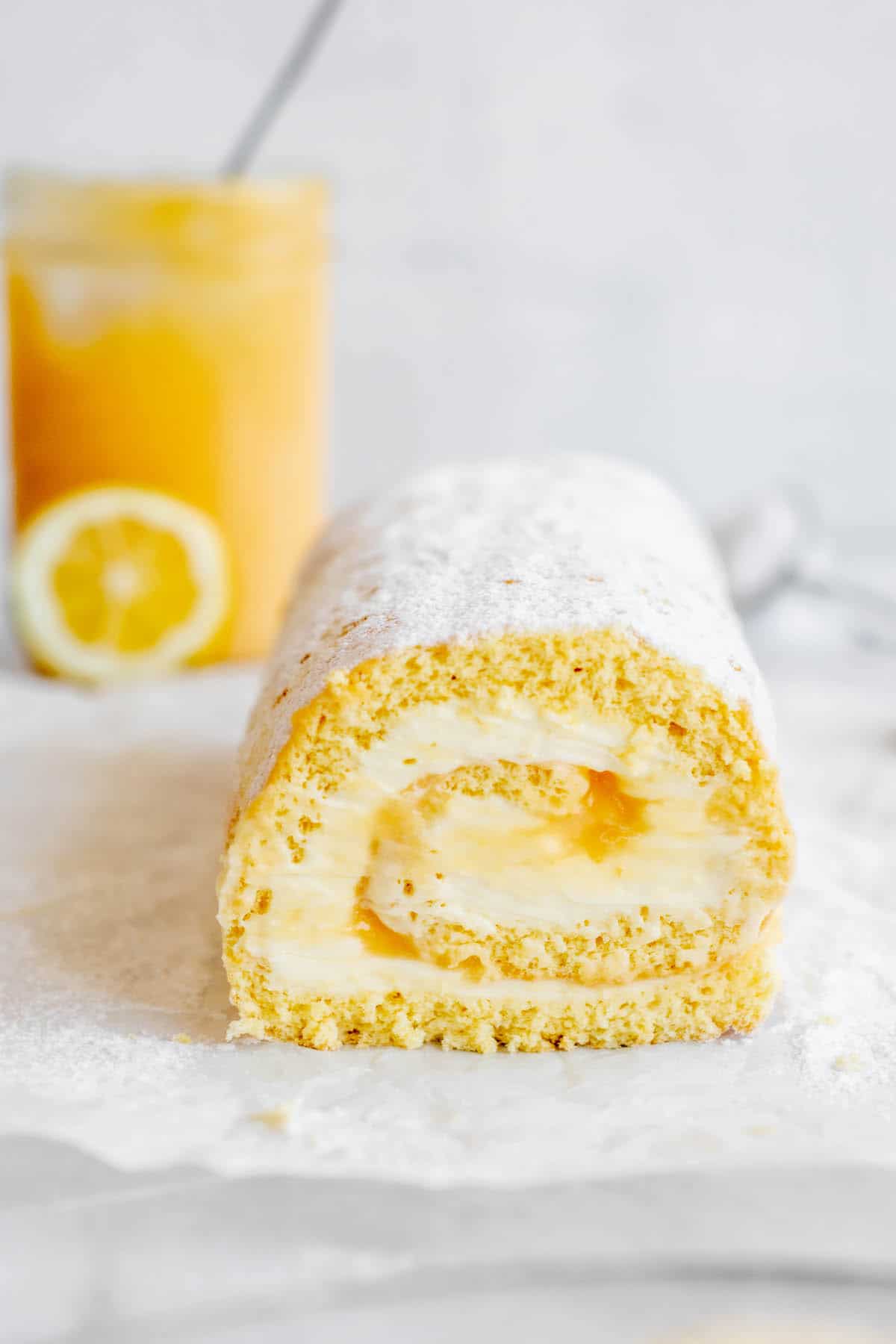
Storing
Leftover lemon swiss roll can be stored in an airtight container in the refrigerator for up to 3 days.
An unfilled genoise sponge can be rolled in a kitchen towel and stored at room temperature in an airtight container for a day.
It can also be wrapped up in plastic wrap and frozen for up to 3 months. Let it thaw before unrolling.

More lemon desserts

Lemon Swiss Roll
A light and fluffy sponge cake, filled with a creamy, tangy lemon filling, and then rolled into a beautiful swirl.
Ingredients
Sponge
- 4 large eggs
- 100g (½ cup) granulated sugar
- 28g (2 tablespoons) neutral vegetable oil
- ½ teaspoon vanilla paste or extract
- 1/8 teaspoon salt
- 90g (¾ cup) cake flour*
Filling
- 100g (½ cup) lemon curd
- 113g (4oz) mascarpone cheese
- 3 tablespoons powdered sugar, plus more for topping
- 1 teaspoon vanilla extract
- 240g (1 cup) heavy cream
Instructions
- Preheat the oven to 350°F/180°C with a rack in the center. Grease a 5x10x1 inch jelly roll pan with oil or cooking spray and line it with a sheet of parchment paper. Greasing the tray first helps the parchment stick and keeps the bottom surface flat
- Separate 4 large eggs. Place the egg yolks in a small bowl and set them aside. Add the egg whites to the large stand mixer bowl and turn it on, whisking at high speed until the mixture becomes foamy.
- Gradually add in half of the sugar while continuing to whisk until the egg whites form medium-stiff peaks. The peaks should hold their shape well, but if you lift the beater from the mixture, they will flop to the side.
- Transfer the whipped egg whites to a clean mixing bowl and set them aside.
- Add the egg yolks, remaining sugar, oil, vanilla, and salt using the same stand mixer bowl. There's no need to clean the bowl first.
- Whisk the egg yolks on high speed for approximately 4-5 minutes until they triple in volume and become thick and pale. The light yellow egg mixture should drop thick, flowing ribbons back into the bowl when lifting the beater out of the mixture.
- Using a rubber spatula, fold a third of the egg whites into the beaten yolk mixture, not deflating the air bubbles in the egg whites.
- Gently bring the spatula through the middle of the mixture, up the side, and fold it over the top. You can rotate the bowl as you do this. Repeat this process two more times with the remaining egg whites.
- Balance a sieve over the bowl of eggs and sieve in roughly half of the flour.
- Using a gentle folding motion, carefully incorporate the flour into the egg mixture, being cautious not to deflate it too much. Repeat this process once more with the remaining flour. The final batter should have a light and airy texture while also being thick.
- Pour the cake batter into a prepared pan and use an offset spatula or dough scraper to carefully spread the batter out into an even layer on the tray.
- It's a very thick and light batter so it won't fill out by itself the way that wet cake batters do. Spread it out to reach the sides of the pan.
- Bake the sponge for around 10-12 minutes until light golden brown on the top and the tip of the cake springs back when gently pressed. While the cake is baking, lay a clean kitchen towel on a workbench, horizontally so the long edge is closest to you. Generously dust it with powdered sugar.
- Once the sponge has finished baking, carefully tip it upside down with the long edge closest to you, onto the towel. Carefully peel off the parchment paper.
- Dust the cake with more powdered sugar, then starting from the short side, roll the cake and the towel up together into a spiral.
- Leave it to cool on a wire rack until it's at room temperature.
The cream
- As the cake cools, prepare the whipped mascarpone cream. Combine the mascarpone, powdered sugar, and vanilla extract in a medium bowl. Use a hand mixer or stand mixer with a paddle attachment, starting on low speed, to mix until everything is combined.
- Slowly increase the speed to medium and gradually pour in the heavy cream while continuing to whisk until the mixture becomes thick and holds stiff peaks. Take care not to overbeat it, as it can curdle and separate.
Assembling
- On a clean work surface, carefully unroll the cooled cake.
- Spread over the whipped cream mixture and use an offset spatula to spread it out, leaving a ½ inch border on all sides. Dollop over the lemon curd, then spread it over the cream with an offset spatula.
- Carefully re-roll the lemon roll, without the kitchen towel, back into a spiral. Some thin crust outside the cake may stick to the towel as you roll, but this can be covered with powdered sugar.
- Wrap the kitchen towel around the rolled cake and let the cake chill in the refrigerator for 30-60 minutes.
Serving
- Remove the cake from the refrigerator and cut off the ends of the roll with a serrated knife (about ¼ inch of each end) to neaten them up.
- Dust with powdered sugar before serving.
Notes
* if you don't have cake flour you can make your own by combining 80g of all-purpose flour with 10g of cornstarch.
This recipe is written using grams as the main measurement. If you don't have a scale US cup equivalents are also included. Note that these are smaller than metric cups.
Nutrition Information:
Yield: 8 Serving Size: 1Amount Per Serving: Calories: 307Total Fat: 20gSaturated Fat: 12gTrans Fat: 0gUnsaturated Fat: 7gCholesterol: 146mgSodium: 122mgCarbohydrates: 27gFiber: 0gSugar: 17gProtein: 6g
This is an informational estimate only. I am not a certified Dietitian or Nutritionist
